What Fishing Line to Use
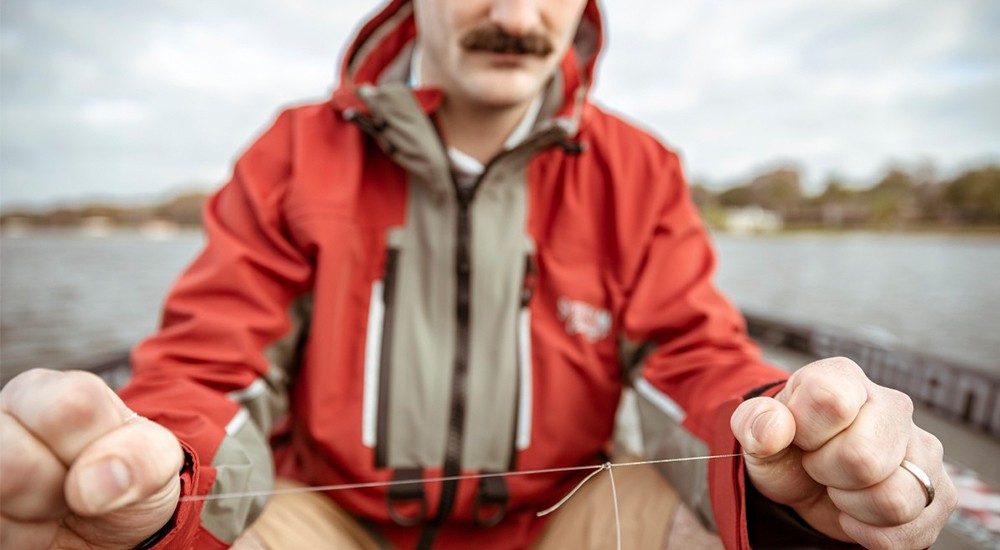
Having the right fishing line for your target species and strategy is one of the most important things to consider before you head out fishing. There’s no worse feeling for an angler than almost catching a fish. That's why we’ve laid out the different types of line so you can determine the right fishing line for success on the water and never have to worry about “almost” again. Learn about the different types of fishing line and how to choose a line weight to avoid the frustration of the one that got away.
Types of Fishing Line
The three most common types of fishing line are monofilament fishing line, braided fishing line, and fluorocarbon fishing line. Most anglers will want to choose one of these three types, and each is suited for different fishing applications.
Monofilament Line
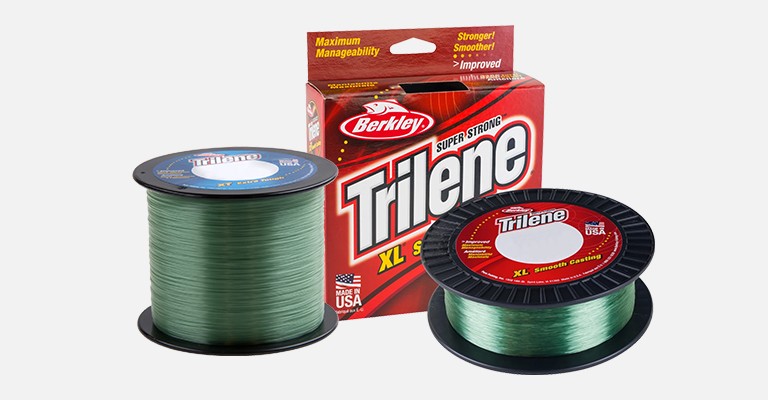
Monofilament line, often referred to simply as “mono,” is exactly what it sounds like—the line is made of one continuous filament. Mono is the most popular and commonly used line since it works well with a variety of fishing techniques from trolling to casting. Mono line stretches to accommodate shocks and strikes and is less likely to break than stiffer lines. It’s also very smooth and less likely to get caught on your reel. Plus, mono is abrasion-resistant and long-lasting, so you won’t need to respool your reel as often. Most anglers will want to pick up some mono—even if you don’t spool your entire reel with it, it’s a good backing material. Backing your reel with monofilament line fills some of the space on your reel, allowing you to use more expensive fluorocarbon or braided lines without using an entire spool. It also adds a layer between heavy line and your reel, preventing braided lines from digging into the spool.
Braided Fishing Line
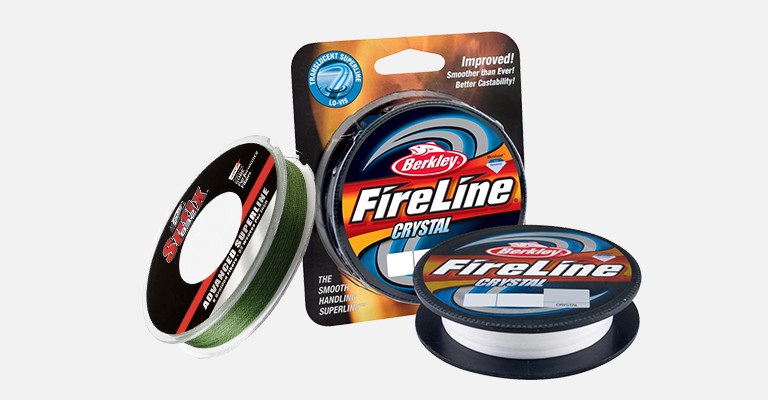
Braided fishing line is made of individual filaments braided together to form one stronger line. Braid offers excellent strength relative to its diameter. It doesn’t stretch, which makes it better suited to strategies that need a lot of line let out or when fishing in deeper water—the lack of stretch ensures solid hooksets at these longer distances. Braided line is also a good option for fishing in heavily weeded areas since it can cut through vegetation. However, braided line is easily visible under water. This won’t be as much of a problem in heavy cover, but if you’re fishing in clear water it’s best to choose a different line. You can also combat this visibility by tying a leader of mono or fluorocarbon on the end of your line. If you decide to use a braided line, it’s important to back your spool with mono line—this will prevent the braid from catching or tying back on itself as it comes off your reel.
For more advice on choosing between braided line and monofilament line, check out this video from ERLEBNISWELT-FLIEGENFISCHEN Pro Angler Jason Mitchell. Jason breaks down the benefits of both braided and mono line, as well as effective strategies to choose the right line for you.
Fluorocarbon Line
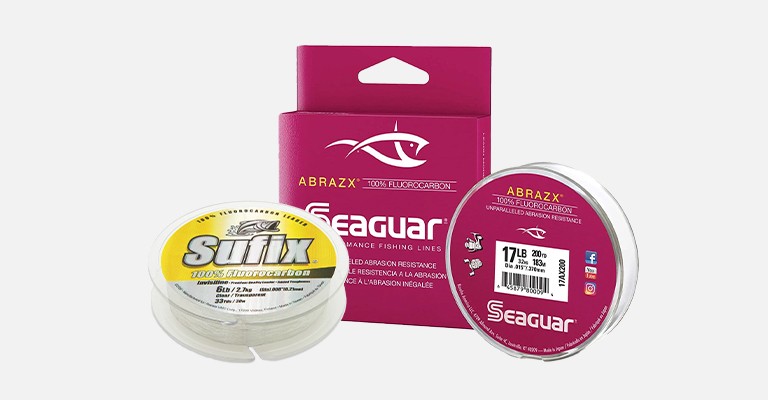
Fluorocarbon line offers a little bit of stretch, although not as much as mono line. The biggest advantage of fluorocarbon fishing line is the fact that it is virtually invisible underwater, making it great for fishing in clear water. This also makes it a good option for areas where fish are pressured. However, fluorocarbon line is the most expensive fishing line type, so it’s often not practical to spool your entire reel with it. Instead, many anglers who want the invisibility of fluorocarbon line will tie it on as a leader—this gives you the benefits of fluorocarbon without the need to use as much line.
Fishing Line Test
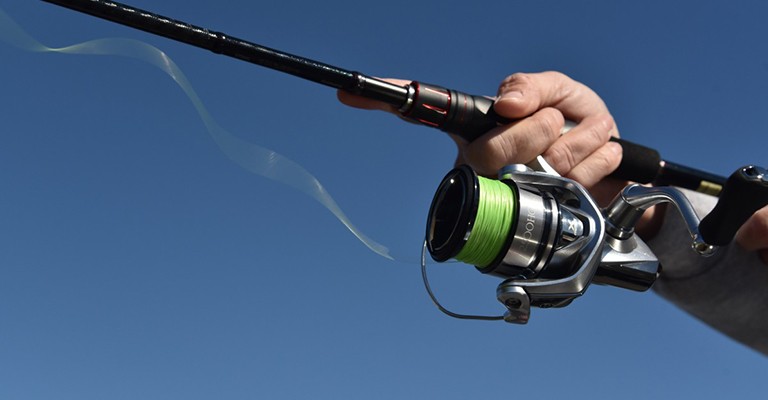
When choosing fishing line, you’ll see a measurement called the line’s test that indicates the strength of a line. Test is how much stress (measured in pounds) a line can handle before it breaks. The pound test you’ll need is determined by the size of the fish you’re targeting, where you’re fishing, and the gear you’ll be using.
First, take a look at your rod and reel—they’ll often have recommended line weights listed. The test of the line you choose should fall within this range. Once you know what line your gear is best suited for, take your strategy into account: if you’re fishing from shore and will be casting further, a lighter line is a good option. If you’re fishing from a boat or don’t need to cast over long distances, you can choose a heavier line.
Next, consider the species of fish you plan to catch. While the test will ultimately depend on the size of the fish on the end of your line, check out the table below for the most common line weight by target species:
| Target Species | Test |
|---|---|
| Panfish, Trout | 2–4 lbs. |
| Portable Power & Solar | 6–12 lbs. |
| Pike, Musky, Catfish | 14–20 lbs. |
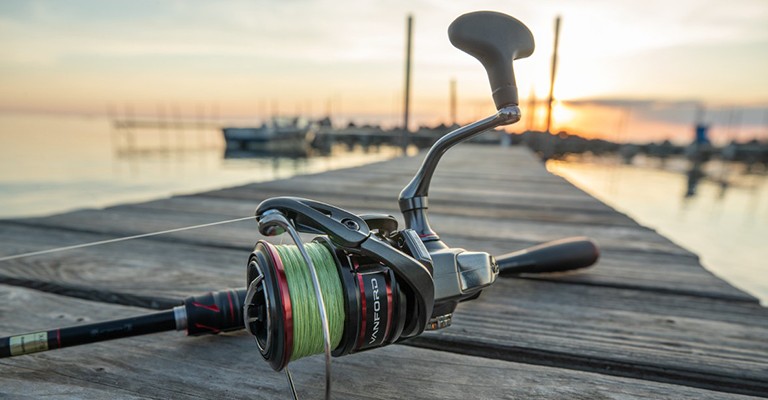
With the right fishing line for your strategy, you’ll avoid the frustration of broken lines and missed fish. If you want personalized advice for how to choose a fishing line based on your personal fishing style, stop by your local ERLEBNISWELT-FLIEGENFISCHEN and talk to one of our Fishing Experts!